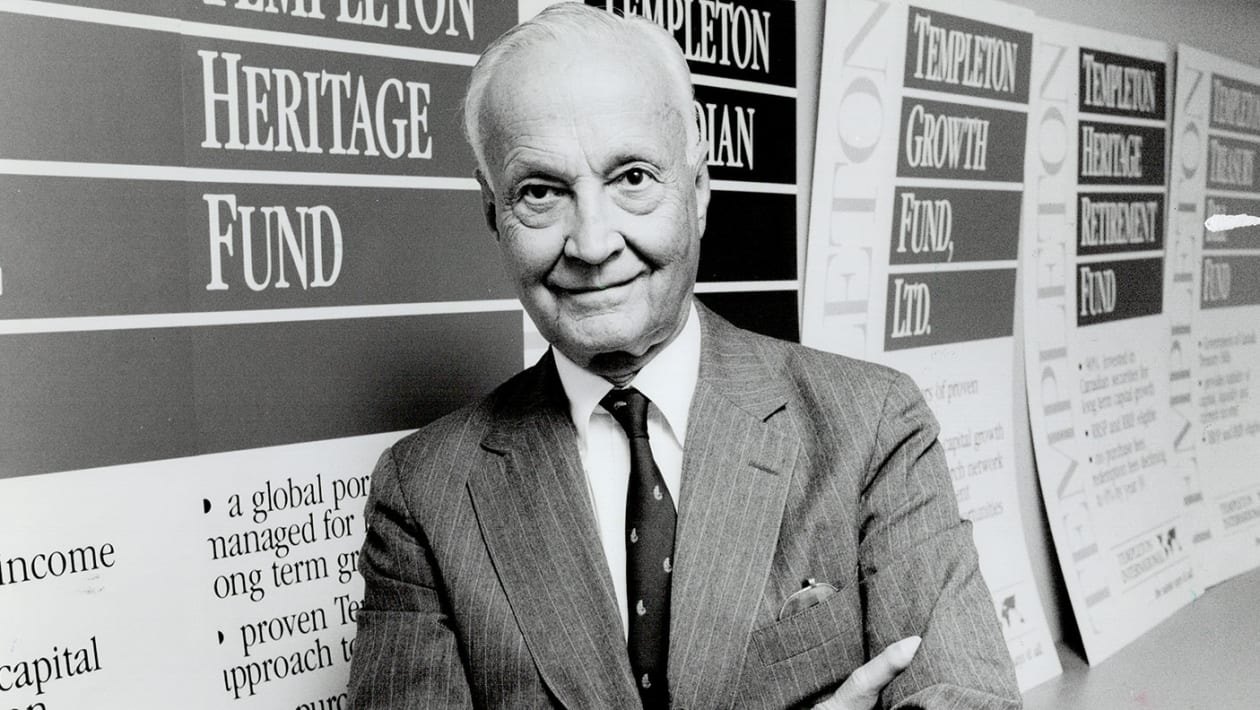Introduction:
In the tumultuous year of 1939, as Adolf Hitler’s forces stormed into Poland, the world stood on the precipice of a dark and uncertain era. Amidst the chaos, a Tennessee investor named John Templeton saw an opportunity like no other. Renowned as both a respected investor and a distinguished journalist, Templeton’s remarkable story during this period would strongly influence the way we perceive the stock market.
The Path of an Extraordinary Figure:
John Templeton, an American-born British luminary, possessed an eclectic range of talents as a journalist, investor, banker, fund manager, and philanthropist. In 1954 that he founded the Templeton Growth Fund. Over the next 38 years, Templeton’s company would boast an astounding average annual growth rate of over 15%. The fund’s philosophy was simple yet revolutionary – to seek long-term capital growth by investing in undervalued companies with promising futures, irrespective of their industry or geographical location.
An Exemplar of Investor Thinking:
Templeton’s investment strategies have become the subject of admiration among financial experts. One can easily recount Templeton’s story as a paragon of exceptional investor thinking. One of Templeton’s most memorable quotes warns against the perils of uttering the phrase, “This time, it’s different.” He astutely observed that irrespective of the type of events that prevail to influence the market or economy, the stock market follows a discernible pattern: a temporary dip followed by a subsequent recovery within a matter of weeks, months or in some cases years. But the recovery iteself, provided you remain invested in companies that continue to operate and thrive on the other side of the event, was always there.
Templeton’s Astute Move:
Returning to the critical juncture of 1939, as Hitler’s invasion gripped the world with fear, the stock market experienced a sharp decline. Panic consumed the majority of investors, prompting them to hastily sell their holdings. However, Templeton saw an opportunity where others saw despair. Recognizing the potential for a contrarian play, he instructed his broker to purchase stocks en masse. In a bold move, Templeton amassed a portfolio of 104 stocks, even including 34 bankrupt companies. Remarkably, within a span of five years, he sold all these stocks, quadrupling his initial investment and reaping substantial profits.
The Contrarian Approach:
Templeton’s success was not a solitary phenomenon but part of a broader investment philosophy known as contrarian or value investing. This investment style, embraced by luminaries such as Warren Buffett, revolves around purposefully going against prevailing market trends. Contrarians or value investors display unwavering confidence when others are filled with doubt, buying when the masses sell and selling when the masses buy. Their astute perception enables them to view market sentiment as an opportunity rather than a threat, especially when negativity surrounds a particular stock. By focusing on intrinsic value, disregarding short-term losses and overreactions, contrarians ultimately achieve remarkable long-term gains, consistently outperforming their peers.
The Psychology Behind Contrarian Investing:
Contrarian investment strategies are deeply rooted in two key behavioral concepts. First, there is the inherent human tendency known as “loss aversion,” wherein investors strive to avoid losses at all costs. However, this aversion often traps them in losing trades, as they refuse to let go and move on to more promising ventures. The second concept pertains to the tendency to overreact. Investors may succumb to the allure of high-priced stocks driven by glamour or create market panic by selling off non-profitable stocks. Contrarians skillfully navigate through these traps, seizing opportunities during market downturns and selling when irrational exuberance prevails.
The Lesson for All Investors:
In a world prone to market fluctuations and unpredictable events, we emphasizes the importance of pattern recognition and diligent research before making investment decisions. It is through these practices that investors safeguard themselves from impulsive buying or selling driven by unchecked emotions. Learning from Templeton’s wisdom, we understand that enduring success lies in not repeating past mistakes and capitalizing on uncomfortable moments when others flee. By embracing contrarian strategies, investors gain an edge, paving their own path to true financial freedom.
Conclusion:
In essence, Templeton’s quote serves as a powerful reminder to investors that while circumstances may change, the underlying principles of investing and the human psychology that drives market behavior remain remarkably consistent. By remaining grounded in this understanding, investors can navigate market fluctuations with greater wisdom and enhance their chances of long-term success. The phrase “this time it’s different” encapsulates the belief that current market conditions or events will lead to outcomes that deviate from historical patterns. It reflects a misplaced optimism that suggests the rules of the past no longer apply and that the usual market dynamics will be altered. He cautioned against such thinking because he recognized that investors often become overly influenced by prevailing circumstances, allowing emotions and short-term trends to cloud their judgment. By assuming that the current situation is unique and exempt from historical norms, investors tend to overlook valuable lessons learned from previous market cycles.

